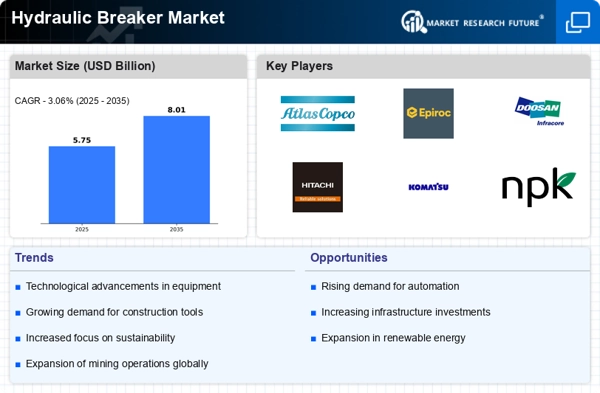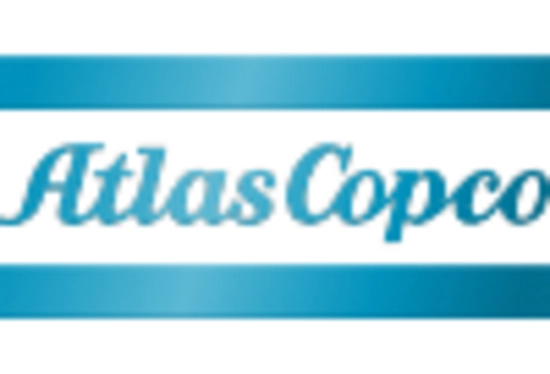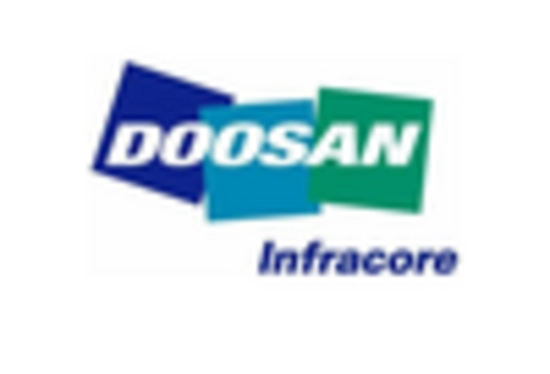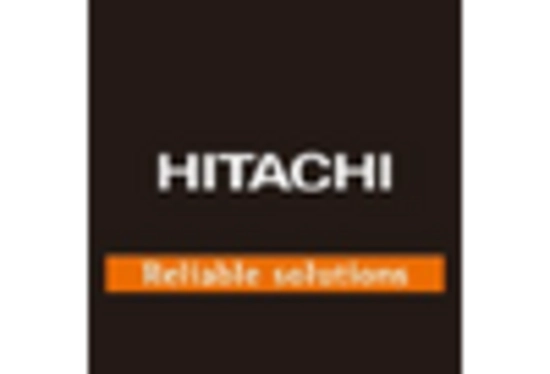Expansion of Rental Services
The Hydraulic Breaker Market is benefiting from the expansion of rental services, which provide customers with flexible options for accessing hydraulic breakers without the need for significant capital investment. This trend is particularly appealing to small and medium-sized enterprises that may not have the budget to purchase expensive equipment outright. The rental market for construction and demolition equipment is projected to grow at a rate of approximately 6% annually, indicating a strong preference for rental solutions. As more companies opt for rental services, the Hydraulic Breaker Market is likely to experience increased demand, as rental companies expand their fleets to include a variety of hydraulic breakers to meet customer needs.
Focus on Safety and Compliance
Safety and compliance regulations are becoming increasingly stringent across various industries, which is positively impacting the Hydraulic Breaker Market. Companies are now prioritizing the use of equipment that meets safety standards and minimizes risks associated with demolition and excavation work. Hydraulic breakers that incorporate safety features, such as anti-vibration technology and noise reduction systems, are gaining popularity. This focus on safety is expected to drive the demand for advanced hydraulic breakers that comply with regulatory requirements. As industries strive to enhance workplace safety, the Hydraulic Breaker Market is likely to see a shift towards products that not only perform well but also adhere to safety and compliance standards.
Increasing Construction Activities
The Hydraulic Breaker Market is experiencing a surge in demand due to the increasing construction activities across various sectors. Infrastructure development, including roads, bridges, and commercial buildings, is driving the need for efficient demolition and excavation tools. According to recent data, the construction sector is projected to grow at a compound annual growth rate of approximately 5.5% over the next few years. This growth is likely to enhance the demand for hydraulic breakers, which are essential for breaking concrete and other hard materials. As urbanization continues to rise, the Hydraulic Breaker Market is expected to benefit significantly from the expansion of construction projects, leading to increased sales and innovation in hydraulic breaker technology.
Rising Demand in Mining Operations
The Hydraulic Breaker Market is also witnessing a notable increase in demand from mining operations. As the need for mineral extraction intensifies, hydraulic breakers are becoming indispensable for breaking rock and ore efficiently. The mining sector has shown resilience, with a projected growth rate of around 4% annually, which is likely to bolster the demand for hydraulic breakers. These tools facilitate the extraction process by enabling precise and controlled breaking of materials, thus enhancing productivity. The Hydraulic Breaker Market is poised to capitalize on this trend, as mining companies seek to optimize their operations and reduce downtime through the use of advanced hydraulic breaker technology.
Technological Innovations in Hydraulic Breakers
Technological advancements are playing a crucial role in shaping the Hydraulic Breaker Market. Innovations such as improved hydraulic systems, enhanced durability, and energy-efficient designs are driving the evolution of hydraulic breakers. Manufacturers are increasingly focusing on developing products that offer better performance and lower operational costs. For instance, the introduction of smart hydraulic breakers equipped with sensors for real-time monitoring is gaining traction. This trend is expected to attract more customers seeking reliable and efficient tools for their projects. As technology continues to advance, the Hydraulic Breaker Market is likely to see a shift towards more sophisticated and user-friendly products, further stimulating market growth.


















Leave a Comment